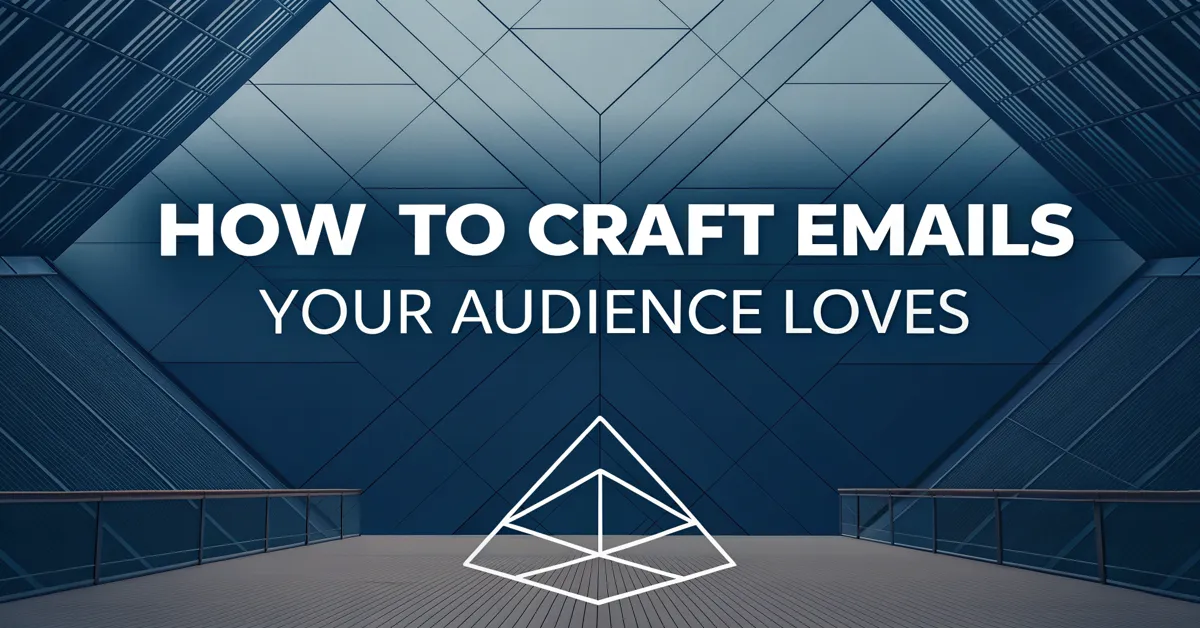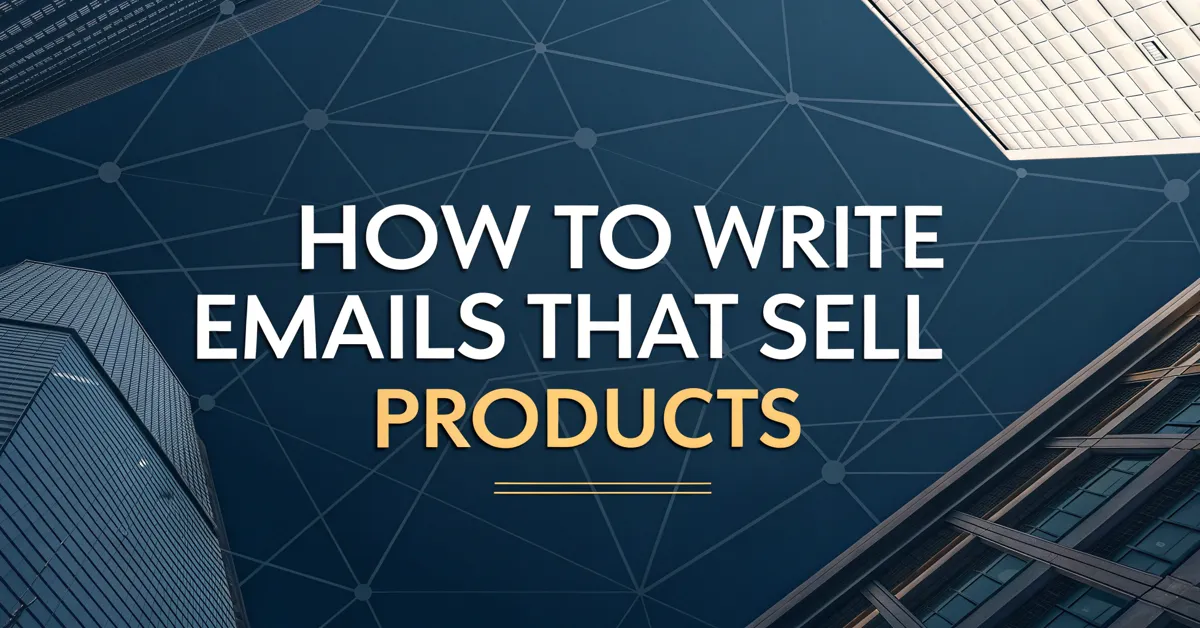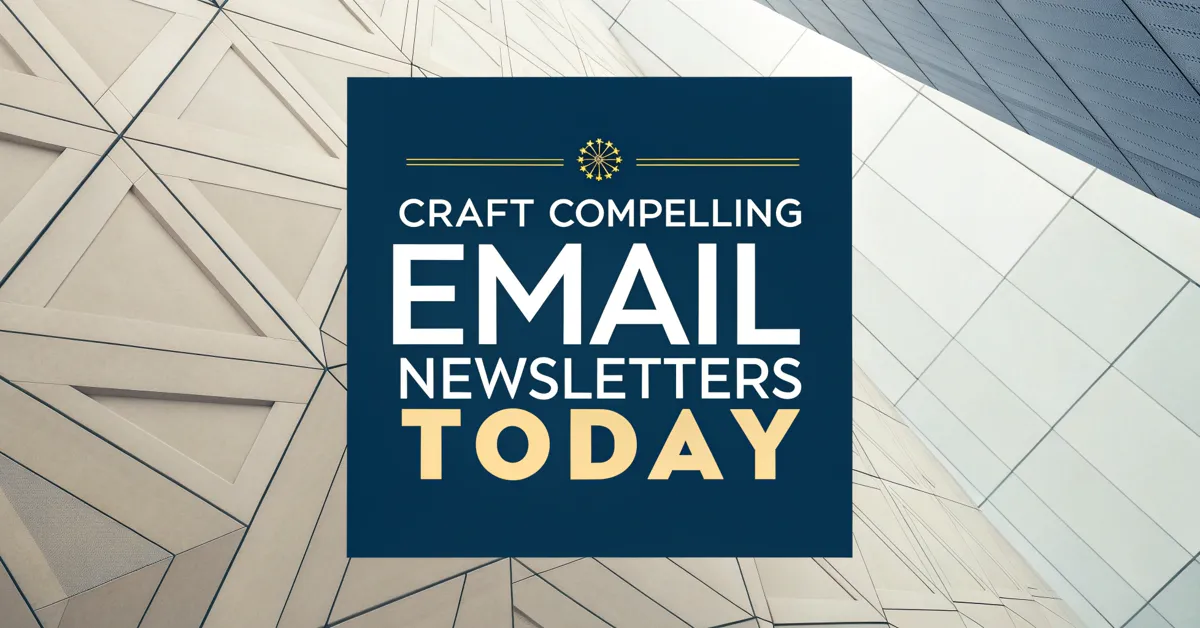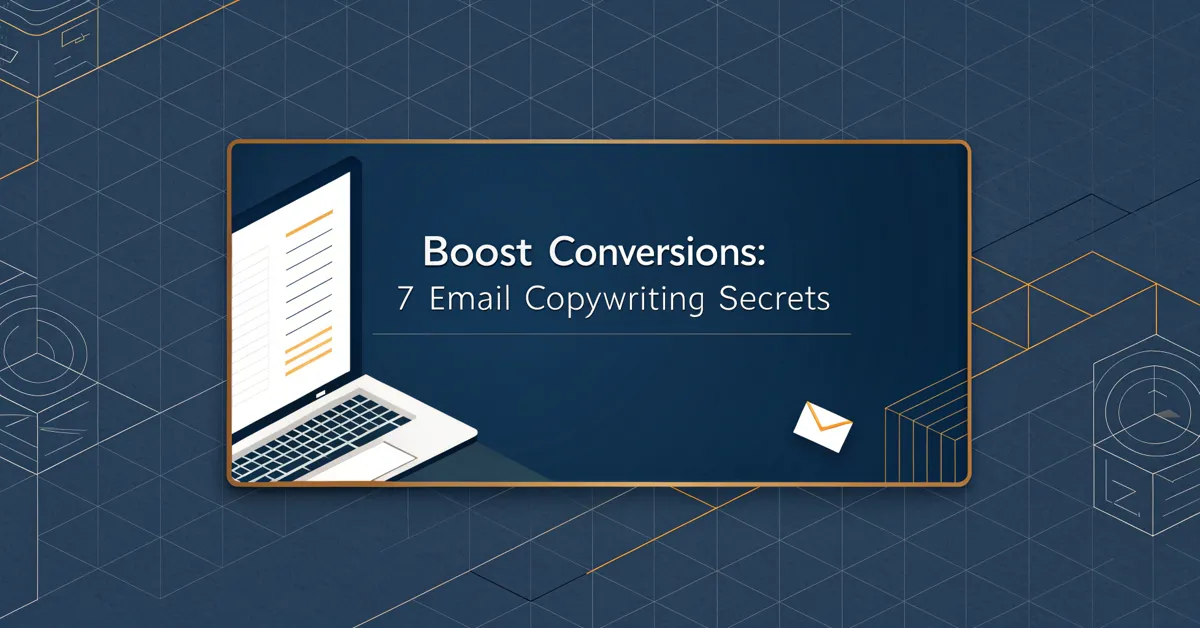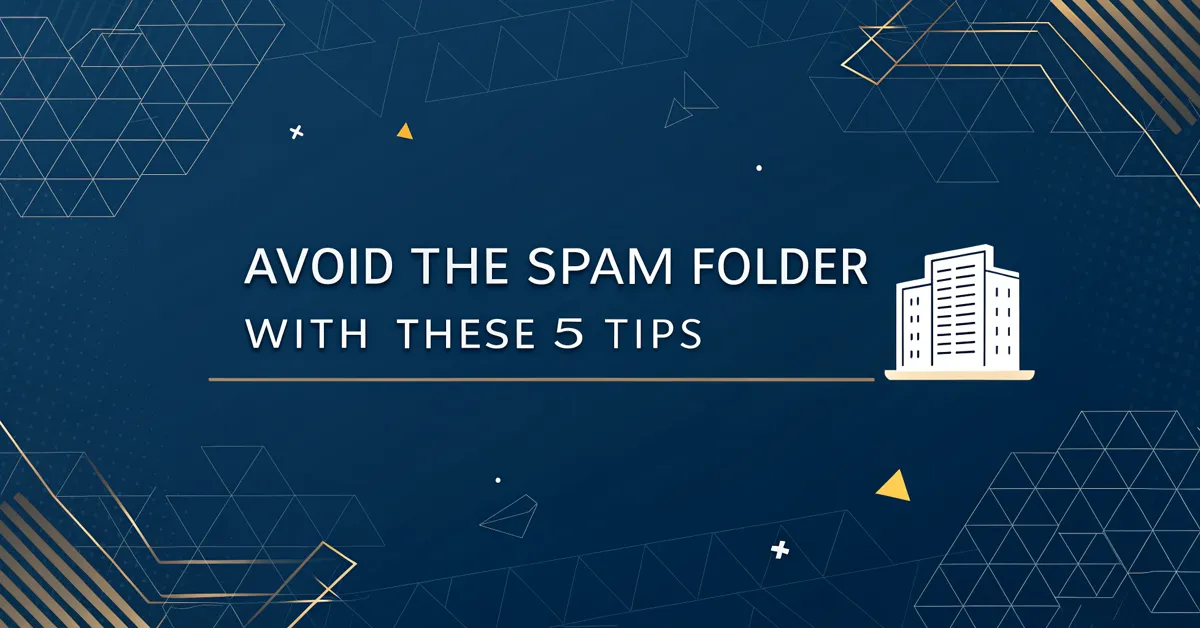Have you ever sent an email that felt like it vanished into the digital void? It’s a common struggle for many. You craft a message, hit send, and then… silence. No replies, no clicks, no love. You see, writing emails that get noticed is not just about what you say but how you say it. It’s about building a connection with your audience, not just broadcasting a message.
This article will help you with this. It will guide you through the steps to craft emails your audience loves. We will show you how to move past generic messages. And then, you can create content that resonates with your readers. This means you will see real engagement. And you will also turn casual subscribers into loyal followers.
Understand Your Audience
Before you write a single word, you need to know who you’re writing to. It’s not enough to know their basic demographic data. You need to understand their needs, their desires, and the problems they face daily. This is the basis of all good communication.
Create Reader Personas
Start by creating detailed reader personas. These are semi-fictional representations of your ideal email subscribers. Give them names, jobs, hobbies, and even pet peeves. This will make them feel real to you. And it will be much easier to write to them.
When you build these personas, think of their goals and motivations. What do they hope to achieve by reading your emails? Are they looking for information, entertainment, or a special offer? Once you can answer this question, you can tailor your messages to meet their needs. Also consider their level of experience with your topic. Are they beginners or experts? This detail helps you set the right tone and level of complexity.
Know Their Pain Points
Your emails need to solve problems for your readers. So, dig deep and identify their pain points. What keeps them up at night? What challenges do they face in their work or daily lives?
Use surveys, polls, and even informal chats with your subscribers. This can be a gold mine of information. Check out social media groups where your audience hangs out. See what questions they are asking. Look at what topics they seem most concerned about. This will provide insight into their real needs.
Adjust to Their Preferences
You must also know how your audience prefers to receive information. Do they like short, punchy emails? Or do they want detailed, in-depth content? Check your email analytics. Look at what they respond to. Try different formats to see what works best.
Some may like a friendly, casual tone. Others might want a more formal, professional one. Consider their age, background, and the purpose of your emails when choosing a voice. Make sure to test and adjust your writing style to match their tastes.
The Power of Segmentation
One of the best ways to make sure your emails feel personal is to segment your list. This means dividing your subscribers into smaller groups based on specific traits. It is based on their interests, behavior, or demographic data.
With segmentation, you can send emails that are super relevant to each group. This makes your messages feel more personal, and it will drive up engagement. Use the data that you have. Do not just send every single email to every single person on your list. Try to break your lists down to create a better experience for the readers.
Craft Compelling Subject Lines
Your subject line is your first, and often only, chance to grab your reader’s attention. If it fails, your email might never get opened. So, it has to be short and very effective.
Keep It Short
A good subject line is like a good headline: short and to the point. Keep it under 50 characters to make sure it shows up on most devices. Mobile users will make up a big part of your email readership. You need to keep the length of your subject line in mind.
Long subject lines will likely get cut off. This can make your message unclear and less engaging. Focus on the key points and cut out the extra words. You must be brief.
Create a Sense of Urgency
People tend to act when they feel a sense of urgency. Use words like “today,” “now,” or “limited time” in your subject line. This will often drive people to open your emails faster.
But, be careful not to overdo it. Too much urgency can make your emails sound spammy or fake. Use it only when it is real. You do not want to trick your audience. You are building trust.
Use Numbers and Symbols
Numbers and symbols are great ways to draw the eye. They stand out from plain text and can make your subject lines more interesting. Try using numbers to show a list of tips or to quantify your value.
Use symbols carefully. Make sure they are relevant to your message and do not look out of place. A symbol that is well placed can add some flair and draw a reader in.
Personalize, But Not Too Much
Personalization is a great way to grab attention. Use your subscriber’s name, but do so in a natural way. Avoid using it in every single email. Or in places where it feels forced.
Sometimes, adding their company name, location, or a specific interest they may have is also a good trick. It is also key to keep your use of personalization varied and natural. It needs to feel personal but not like you are trying to hard.
A/B Test Your Subject Lines
A/B testing is when you send different subject lines to different parts of your list. Then, you see which ones get the most opens. This is a great way to learn what your audience prefers. Always test and adjust. This is key to making emails that perform well.
Do not make guesses. Instead, use real data to guide your decisions. The results of these tests can be very helpful. They can also show you the best ways to write future subject lines.
Write Engaging Email Body
Once you have the open, you need to hook your reader in. This means you need content that is interesting, relevant, and easy to read. The main body of your email needs to keep the attention of the reader.
Start with a Compelling Opening
Start your email with a line that gets attention. Do not simply repeat your subject line. Try to pique their interest or spark an emotion. Make sure it flows naturally.
Ask a thought-provoking question, tell a short story, or share an interesting fact. Do not make the opening too long. It needs to be short, punchy, and directly on point. A good opening will make your reader want to read more.
Use a Conversational Tone
Write as you would speak to a friend. This makes your emails feel more personal and less like a mass message. Use simple language and short sentences to make your content easy to read.
Avoid the use of jargon and technical terms that might confuse some readers. Stay clear and simple. Be real. Be yourself. Readers want to connect with a person, not just a business.
Focus on One Key Point
Each email should have a key goal. Do not try to fit too much into one message. Pick one main topic or idea. And build your email around it. This will make your emails more effective. And much easier for your reader to understand.
When you have many topics to cover, break them down into separate emails. This will allow your readers to stay on topic and not get lost or over whelmed. Do not try to give your readers too much at once.
Make it Skimmable
People do not read emails. They skim them. Use headlines, subheads, bullet points, and images. This will make your content easy to scan and digest. Use bold text to draw attention to key points.
Break your content down into small sections. This will make it easy to scan and digest. Keep paragraphs short and do not be afraid to use whitespace. White space makes your email look good and easy to read.
Add Value
Your emails need to provide real value to your readers. This could be news, advice, a special offer, or even some light entertainment. Whatever it is, it has to be something they find useful or enjoyable.
Do not send out emails just to send emails. Every single message needs to have a purpose. Every single message needs to add some type of value to your audience. Your readers need to feel that they are gaining something every time they open an email from you.
Tell Stories
People love a good story. Stories help make your emails feel more personal and memorable. Share stories of your brand, your employees, or even your clients. Show that there is a real person behind the brand.
Stories can show your brand values, build trust, and make an emotional connection. When you make your readers feel a real emotional link with your brand, it helps build loyalty. It makes your emails more interesting and fun to read.
Use Strong Visuals
Images and videos can make your emails more interesting and engaging. Use high-quality pictures that are relevant to your content. Add short videos that help support your core message.
Make sure that your images are clear and that they fit with your brand. Also, make sure they do not slow down the loading speed of your emails. Choose the right file type, and you will have better looking emails that are easy to load and read.
Create a Call to Action
What do you want your readers to do after they read your email? Make this clear with a strong call to action (CTA). Use words like “shop now,” “learn more,” or “get started.” Make sure they are in a visible spot.
Your CTA should be clear and simple. It should guide your readers on the next step you want them to take. It could be as easy as a button with clear text and bright colors. It also needs to feel natural in the flow of the email.
Keep It Concise
Long emails are hard to read and will likely be ignored. Be sure that you get to the point. Use simple language and short sentences. Be clear and to the point to keep your readers engaged and interested.
If you have a lot to say, you might need to break it down into several emails. When you write your email, make sure that each sentence has real value. Each sentence must be there for a reason.
Optimize Email Design
A well-designed email is just as important as the words you write. The design of your emails can make them much easier to read. It can also make them more enjoyable for your readers.
Use Mobile-Friendly Layouts
Many people will check your emails on their phones or tablets. Make sure your email layouts are responsive. That means they should adjust to different screen sizes and devices. Use big fonts and a clear layout to keep your emails readable.
Use a mobile-friendly design template. You also need to check the design on many different devices. You have to be sure that your emails look good on any device your reader may be using.
Choose the Right Colors
Use colors that match your brand and make your emails look good. Do not use too many colors. It can make your emails look cluttered and hard to read. Pick a few colors that fit your brand.
Use a color palette that is simple and easy to look at. You also need to be sure that your text is clear. Do not choose colors that make the text hard to see. You need to keep your text simple and clear.
Make Use of White Space
White space is the empty areas between and around the content in your email. It helps make your emails look less cluttered. It also makes them easier to read. White space can make your emails much more inviting.
Use white space to break up big blocks of text. And draw attention to important parts of your email. Do not be afraid of blank space in your emails. It makes your content look better.
Pick Clear Fonts
Your fonts should be easy to read on all devices. Simple fonts like Arial, Times New Roman, or Calibri are good options. Do not use fonts that are too fancy or hard to read. Keep it simple and clear.
Make sure your font sizes are big enough for people to see with ease. Do not make people need to strain to read your emails. This will make for a bad experience for your readers. Always keep their needs in mind.
Keep the Design Simple
A simple design is often the best. Do not use too many graphics, colors, or fancy design elements. Your email needs to be clear and easy to read. Stay away from elements that will distract your readers.
The main goal of your email should be to get your message across to the reader. The design needs to help make that happen. It should never make it more difficult. The design needs to enhance your content. It should not get in the way.
Personalize Your Emails
Personalized emails feel like they are written just for the reader. This can make them much more engaging. It helps to build a stronger link with your audience.
Use Personal Details
Use your subscriber’s name in your email, where it feels natural. But, you need to go further. Use other details like their location, company, or interests. This will help make your emails feel less like generic messages.
You need to be clever with how you use these details. You want to show that you know your audience well. You also need to make sure that you are using their data with real care and respect.
Adjust Content to Their Interests
Use the data you have about your subscribers. Segment your lists and adjust the content of your emails to their interests. When your content is relevant, your readers will be more likely to engage with it.
Tailor the topics, offers, and stories you include based on what you know your readers care about. This personalization makes your emails feel much more special and relevant. This will help drive much better engagement.
Send Behavior-Triggered Emails
Behavior-triggered emails are sent when a user takes a certain action on your site or in your emails. For example, send an email to users who leave products in their cart. This type of email feels highly personal and useful.
Behavior-triggered emails can be very effective in driving conversions. This is because the messages are very relevant and timely. Send email only when the user has made an action that calls for it.
Offer Customized Content
Customized content means sending content based on your subscriber’s past actions. For example, if a reader buys a product from you, you can send emails with related products or tips. Make sure that your content is always a natural continuation.
When you offer unique content based on the actions the reader has made, it can be much more useful to them. This can improve engagement and overall satisfaction. This personalization goes a long way.
Use Dynamic Content
Dynamic content is content that changes based on the data that you have about your subscribers. This means your emails can have different content for different readers based on your segmenting. This is personalization on another level.
Dynamic content is a powerful way to provide a tailored experience. This makes each reader feel like you’re talking directly to them. This kind of personalization can drive great engagement from your audience.
Test and Optimize Your Emails
Do not just send emails and hope for the best. You must test, adjust, and improve. This is the only way to make your emails better. This is the only way to make emails that your readers will love.
A/B Test Different Elements
A/B testing is when you send emails with minor changes to different groups of your list. This will help you to check what works best. Test your subject lines, body text, design, and call to actions.
Run these tests and use the data that you gather to improve your future emails. Every detail matters. Even a very small change can make a big difference in your email performance.
Monitor Your Email Analytics
Keep a close watch on your email analytics. Check open rates, click rates, and unsubscribe rates. This will give you key data that can show you what parts of your email strategy work. It also shows what parts can be adjusted for improvement.
Use analytics to track your email’s key performance indicators. Also look at the overall trend, you will see a good view of your long-term results. This will help you to spot patterns and better optimize your strategy for the future.
Use Heatmaps
Heatmaps show you how your readers interact with your emails. They show you where your readers click and what parts of the emails they spend the most time on. This will help show you what’s working well and what needs to be changed.
These heatmaps give you great visual insights. This will help you see what parts of your emails grab the most attention. It can help you adjust placement and layout to better optimize performance.
Ask for Feedback
Do not be afraid to ask your readers for feedback. Use surveys, polls, or even a simple “reply” email, it can show you what they think. This will provide great insights to help you improve your emails.
When you get feedback, make sure to thank your readers. Show that you care about their views. This feedback loop will help to improve the emails you send, and improve trust and loyalty with your readers.
Always Improve
Email marketing is always changing. So, you always have to be willing to learn, test, and adjust. Make sure you are up to date with the best practices in the field. Always aim to make your emails better each time you send one out.
Always be on the hunt for ways to improve your email strategy. This attitude will help you make the best emails possible. And this will lead to long-term success with your audience.
Stay Consistent and Patient
Building an audience that loves your emails takes time and effort. Do not expect instant results. Make sure you are consistent and keep at it.
Send Regular Emails
Send emails on a regular basis. This is the key to staying top of mind with your audience. Be sure not to send too many emails. Pick a schedule that works for you. Also pick one that does not over whelm your subscribers.
Pick a schedule and try your best to stick to it. This will help your audience know when to expect to hear from you. The more you send, the more chances you have to make a real link with your readers.
Create a Brand Voice
Your brand voice should be clear and consistent in all of your emails. This will help your readers to easily recognize your brand. It helps create a sense of trust and familiarity over time.
Use the same language, tone, and style in every single email that you send. Keep your voice consistent, it will help make your brand more clear and memorable. This builds trust over time with your readers.
Be Patient
Building a loyal audience takes time. Do not get discouraged by short-term results. Just keep working on making great content. Also keep building a real link with your subscribers. Over time, this hard work will pay off for you.
Focus on making valuable and interesting emails. The more your readers feel that you care about them, the better results you will see in the long run. Just keep working to build those links with your audience.
Have a Long-Term View
Email marketing is a long-term game. Focus on building a great link with your subscribers. Do not get too caught up in short-term goals. When you focus on building real loyalty, you will see great results over the years to come.
When you have a long-term view, you will be more willing to put in the time and effort that is needed to build a loyal audience. This mindset will be the base of your long-term success. Make sure you stay in for the long game.
Do Not Give Up
There will be times when you do not see the results that you expect. Do not give up. Just keep testing and keep adjusting your strategy. The more you work at it, the better results you will see.
When you push through the tough times, it will make you better in the long run. Just stay focused and keep your eye on the main goals you have for your email marketing. This is the base of your success.
The Future of Email Marketing
Email marketing is always changing, and you have to stay ahead of the latest trends. This will help keep your strategy relevant and effective. If you do not stay up to date, you will get left behind.
AI and Personalization
AI is changing the world, and this includes email marketing. AI tools can help you adjust your content, segment your lists, and predict behavior. This will help you create better personalized emails.
AI can help make your email marketing more effective and easy. Just keep up to date with the latest tech and tools. This will help take your email marketing to the next level.
Interactive Emails
Interactive emails are a great way to make your emails more fun and engaging. Use surveys, polls, or even small games. This will help to get your readers to engage with your emails.
Interactive emails make the emails more dynamic. It will make them feel more like an experience than just a message. Try to use more interactive tools to keep your readers engaged.
Privacy and Transparency
People care more and more about their privacy. Be sure to be clear with your privacy policy. Also make sure your readers know how you’re going to use their data. Transparency is a must, and you need to build trust with your readers.
When you are clear with your privacy policies, you will build a better sense of trust with your readers. Honesty is key when you are building a loyal audience. When you are clear, your readers will be more likely to stick with you.
Mobile-First Mindset
Mobile is still the main way people will access your emails. Keep a mobile-first mind when making and adjusting your emails. This means keeping the small screen in mind every time.
Focus on creating a mobile-friendly experience with every single email. This will help keep your readers engaged and happy. When your emails look good on mobile, you will see much better results.
Integration Across Platforms
Make sure your email marketing goes well with other channels. Like social media and your website. This creates a linked experience for your readers. This will give you better results across the board.
Try to keep your brand consistent everywhere. This will make it easy for your readers to follow you. Make sure all the parts of your business flow together to make the best experience for your audience.
Make Emails That Resonate
Crafting emails your audience loves is not just about what you say but how you say it. It’s about building a real link with your readers. It is also about adding value in every message. This will help build trust and loyalty with your audience.
By putting in time, effort, and real thought into your email marketing, you can create a real sense of community around your brand. It will make your readers look forward to your messages every single time. When you are consistent, you will see the best results.
So, let’s go beyond the typical spam email. Let us instead build a real link with your readers. Let’s make emails that are a true value, and they will also drive long-term success. Let us make emails that your audience will truly love.
